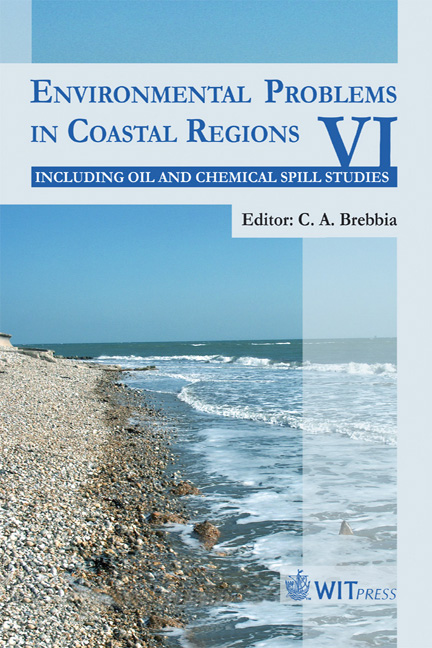Peculiarities Of The Water Framework Directive Implementation In The Canary Islands’ Superficial Waters
Price
Free (open access)
Transaction
Volume
88
Pages
9
Published
2006
Size
388 kb
Paper DOI
10.2495/CENV060431
Copyright
WIT Press
Author(s)
I. Del Barrio, R. Álvarez, I. Santana, O. Briz, R. Bordón, J. Hernández & N. González
Abstract
Nowadays, Directive 2000/60/CEE is the European Union’s basic instrument to manage hydrologic resources in a sustainable way. Its main objectives are the progressive reduction of pollutant spills and the achievement of a good ecological quality of superficial waters. The first aspect requires registering all the spilled substances and controlling their concentration in water. In the Canary Islands, it is complicated to establish the substances to be analyzed since the inventory of pressures is not updated. Therefore, most of the very toxic compounds (Annex X) are in the Monitoring Program. Regarding the evaluation of ecological quality, biological indicators and their quality thresholds are being defined by the intercalibration exercise, which is organised among states that belong to the same ecoregion. The Canary Islands belong to the Northeast Atlantic Geographical Intercalibration Group. Although it is being attempted to consider each place’s idiosyncrasy (Spain, Portugal, France, UK, Ireland, Belgium, Netherlands, Denmark, Norway and Sweden), the indicators proposed for the time being may not evaluate conveniently their ecological state, especially in the peripheral regions, such as the Canary Islands. This was not predicted by the Directive, which did not differentiate between the diverse Atlantic regions. Nevertheless, if these subjects come to a consensus, the European Union will be on its way to attain the protection of one of the most valuable resource in the near future: the water. Keywords: Water Framework Directive, ecological quality, coastal waters.
Keywords
Water Framework Directive, ecological quality, coastal waters.





